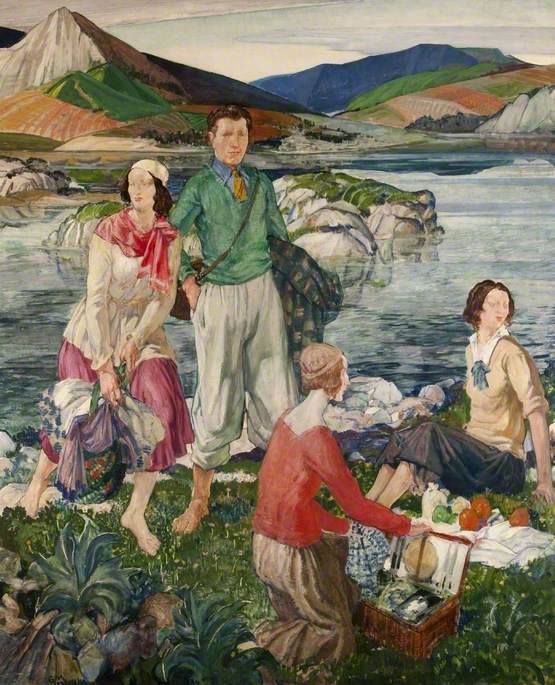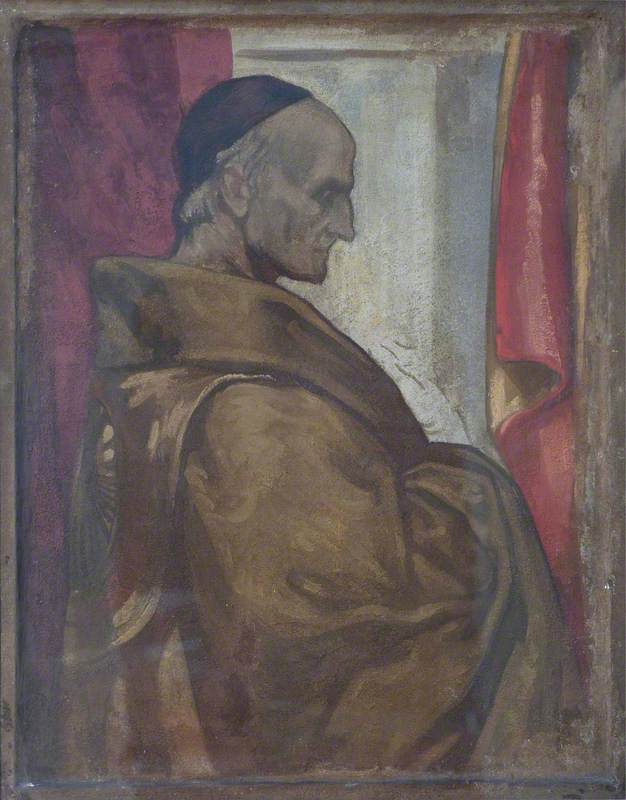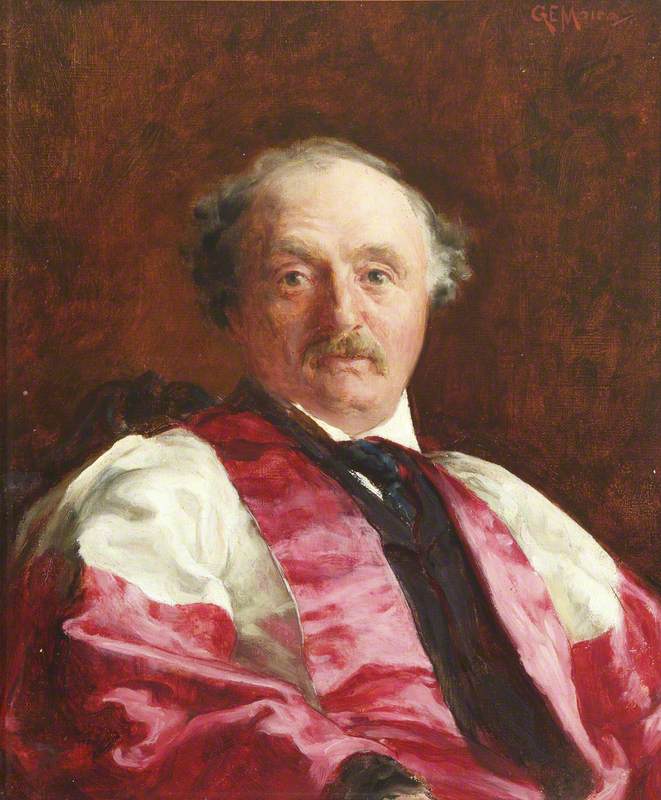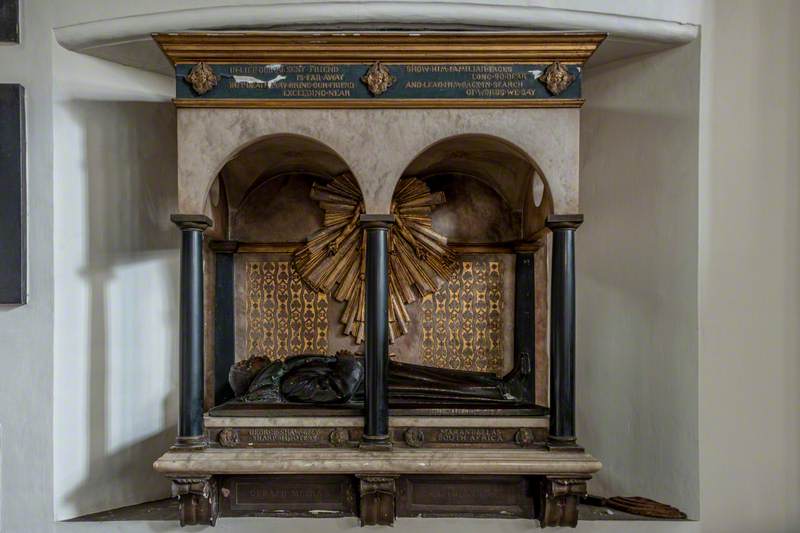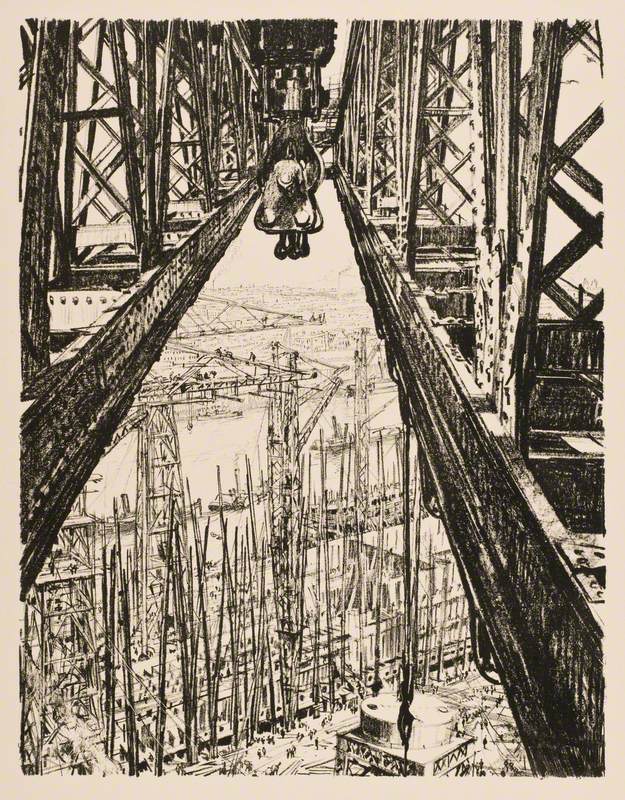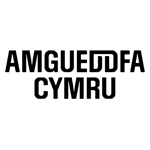Edward Gerald Lobo de Moira [commonly known as Gerald Moira] was born in London, England on 26 January 1867 and was the son of Eduardo Lobo da Moira (1817–1887), a Portuguese diplomat and miniature painter, who by 1845 had moved to England. He exhibited at the Royal Academy in London from 1848 to 1887 and became a naturalised British citizen in 1875. Gerald Moira received tutoring from his father and also took evening classes in art. From 1887 to 1889 he studied at the Royal Academy Schools in London. Whilst a student he drew illustrations for the magazine 'The Lock to Lock Times'. After leaving the RA Schools he spent a period in Paris. Following his return to England he set up a studio in London and subsequently embarked on a career as a painter, muralist and decorative artist.
Moira came to prominence with the decorations he painted in collaboration with the sculptor Frank Lynn Jenkins (1870-1927) at the Trocadero restaurant in Shaftesbury Avenue, London for J. Lyons & Co. in 1898. He later collaborated with Jenkins in the production of a number of coloured low relief friezes. Other notable commissions on which Moira worked included ceiling decorations for the library and vestry of the Unitarian church in Liverpool (1898); a frieze for the Passmore Edwards Free Library in Shoreditch, London (1898); ceiling decorations for the board-room of Lloyd's Register of Shipping in London (1901); and a decorative scheme, which included lunettes, paintings and stained glass windows, for the central criminal court in London (1902–06). Among the numerous portraits Moira painted was that of Cardinal Manning in 1906
In 1891 Moira began exhibiting at the Royal Academy and continued to do so regularly until 1946. Between the 1890s and the late 1940s he also exhibited at the Beaux Arts Gallery, Fine Art Society, Grosvenor Gallery, Goupil Gallery, London Salon, New Gallery, Royal Society of Portrait Painters, International Society of Sculptors, Painters and Gravers, Royal Institute of Oil Painters, and Royal Society of Painters in Water Colours in London; Royal Glasgow Institute of the Fine Arts; Walker Art Gallery in Liverpool; Leeds City Art Gallery; and at the Royal Scottish Academy and Royal Scottish Society of Painters in Water Colours in Edinburgh. He participated in the British Arts and Crafts Section of the Ghent International Exhibition in 1913, the exhibition of the Arts & Crafts Exhibition Society in London in 1916, and in the Exposition internationale des arts décoratifs et industriels modernes in Paris in 1925. A solo exhibition of his work was held at Beaux Arts Gallery in London in 1923.
Moira was elected a member of the Art Workers Guild in 1898; the Royal Watercolour Society (RWS) in 1917; and the Royal Society of Oil Painters (ROI) in 1932. He was Vice President of the Royal Society of Oil Painters (VPROI) in 1938; and President of the Royal Institute of Oil Painters (PROI) in 1945. He was also a member of the Royal West of England Academy (RWA), and a founding member of the National Portrait Society.
He was Professor of Mural and Decorative Painting at the Royal College of Art from 1900 to 1923, and Principal of Edinburgh College of Art from 1924 to 1932.
Moira's address was given as 9 Colville Mansions, London in 1891 and 1898; 34 Addison Road, Kensington, London in 1915 and 1941; 7 Moor Park Road, Northwood, Middlesex in 1942 and 1943; and from 1946 until his death on 2 August 1959, at 13 Dene Road, Northwood, Middlesex.
Text source: Art History Research net (AHR net)
